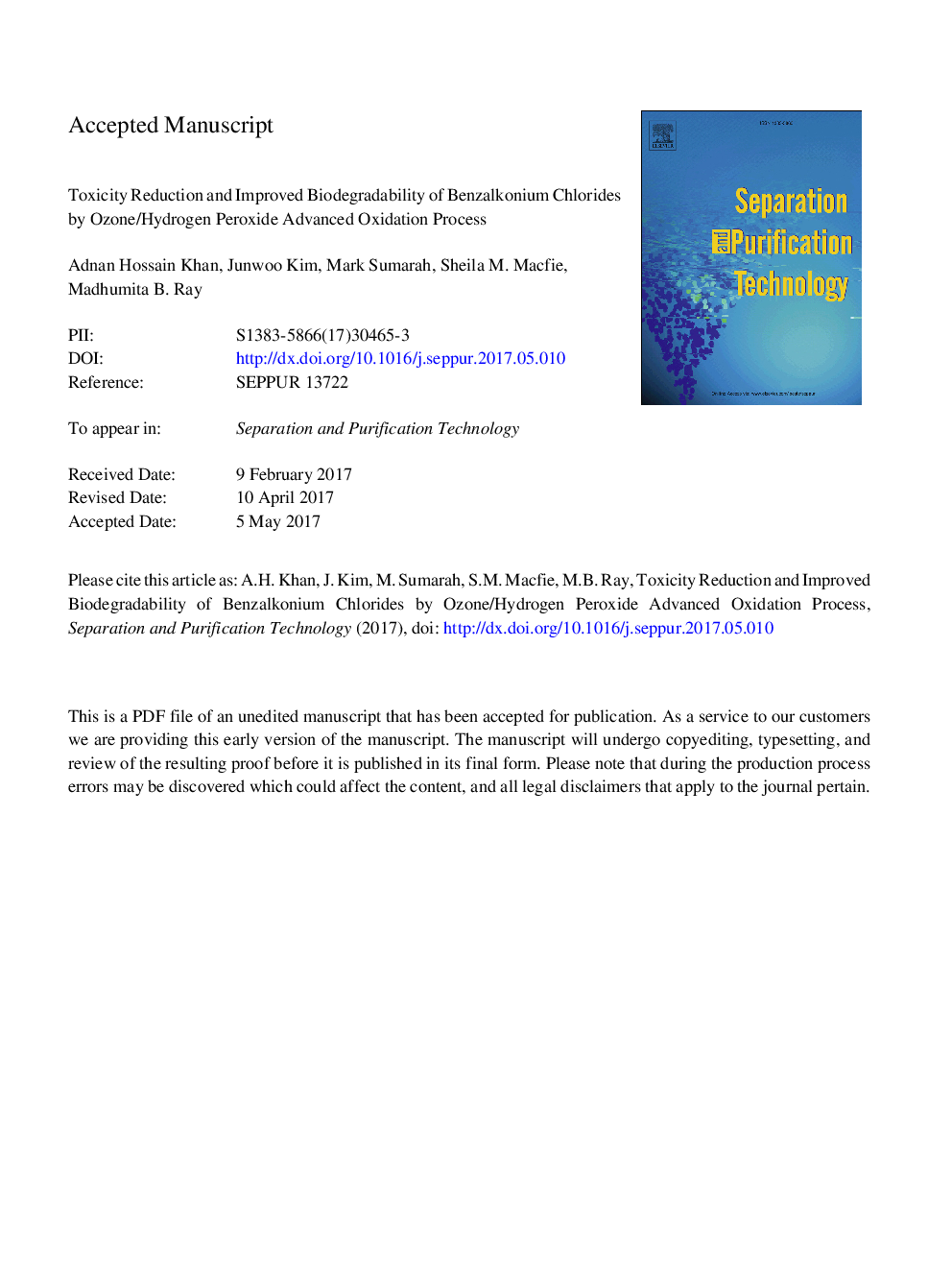| Article ID | Journal | Published Year | Pages | File Type |
|---|---|---|---|---|
| 4989632 | Separation and Purification Technology | 2017 | 35 Pages |
Abstract
Advanced oxidation of a mixture of two benzalkonium chlorides (BACs), benzyl dimethyl dodecyl ammonium chloride (BDDA) and benzyl dimethyl tetradecyl ammonium chloride (BDTA), using O3 and H2O2 at elevated pH was performed in Milli-Q water and in a municipal wastewater influent. The potential for O3/H2O2 advanced oxidation process (AOP) to reduce the toxicity of BACs was evaluated. Experimental conditions were optimized using a central composite design (CCD). About 1.28 g hâ1 O3 and 200 mg Lâ1 of H2O2 at pH 11 degraded 90% of the initial BACs (BDDA:BDTA at 50:25 mg Lâ1) within 30 min. Formation of 25 intermediates and six degradation pathways for the hydrophilic (benzyl and ammonium moiety) and hydrophobic (alkyl chain) constituents of BACs were proposed. Despite the formation of various intermediates, toxicity of BACs in the treated water, assessed using two fresh water algae species (Chlorella vulgaris and Chlamydomonas reinhardtii), was completely removed by O3/H2O2 oxidation. Based on the ratio of the 5-day biological oxygen demand (BOD5) to chemical oxygen demand (COD), AOP improved the biodegradability of BACs.
Keywords
QACsBACSMSMCCDTSSWWTPSPMRASBOD5AOPVSsadvanced oxidationanalysis of varianceANOVAQuaternary ammonium compoundschemical oxygen demandSuspended particulate matterResponse surface methodologyRSMbiodegradabilityToxicityCationic surfactantsCentral composite designAdvanced oxidation processVolatile suspended solidsIntermediatesCodTotal suspended solidBenzalkonium chloridesWastewater treatment plants
Related Topics
Physical Sciences and Engineering
Chemical Engineering
Filtration and Separation
Authors
Adnan Hossain Khan, Junwoo Kim, Mark Sumarah, Sheila M. Macfie, Madhumita B. Ray,
